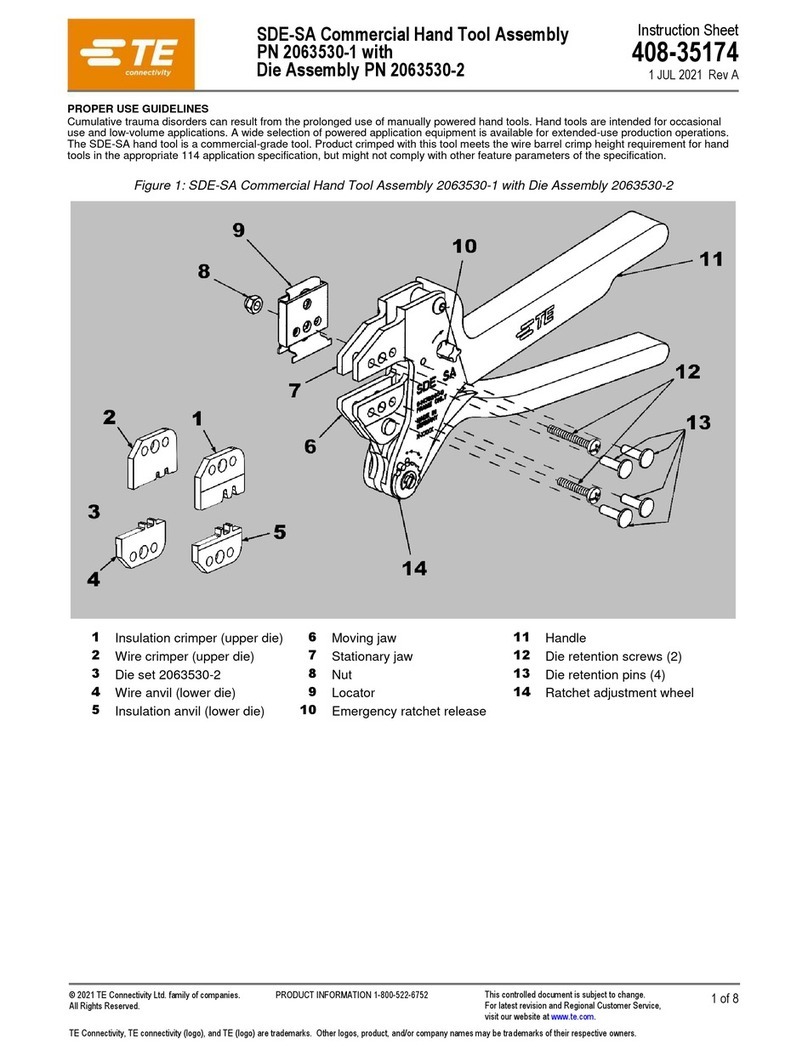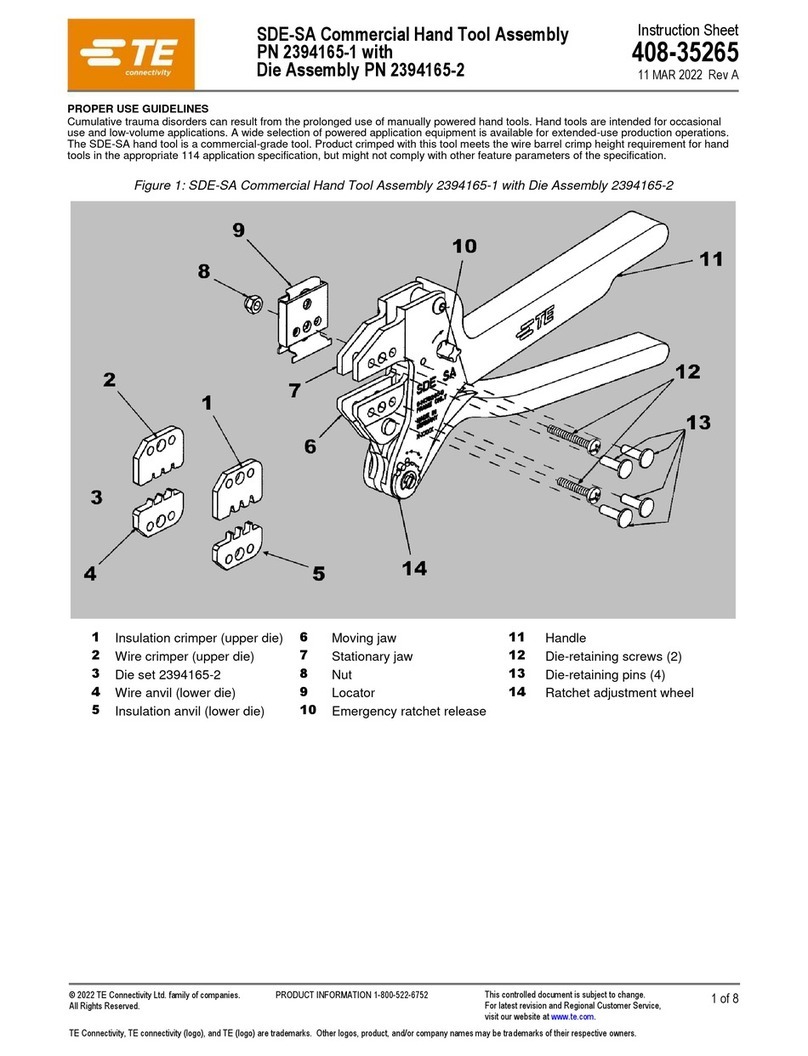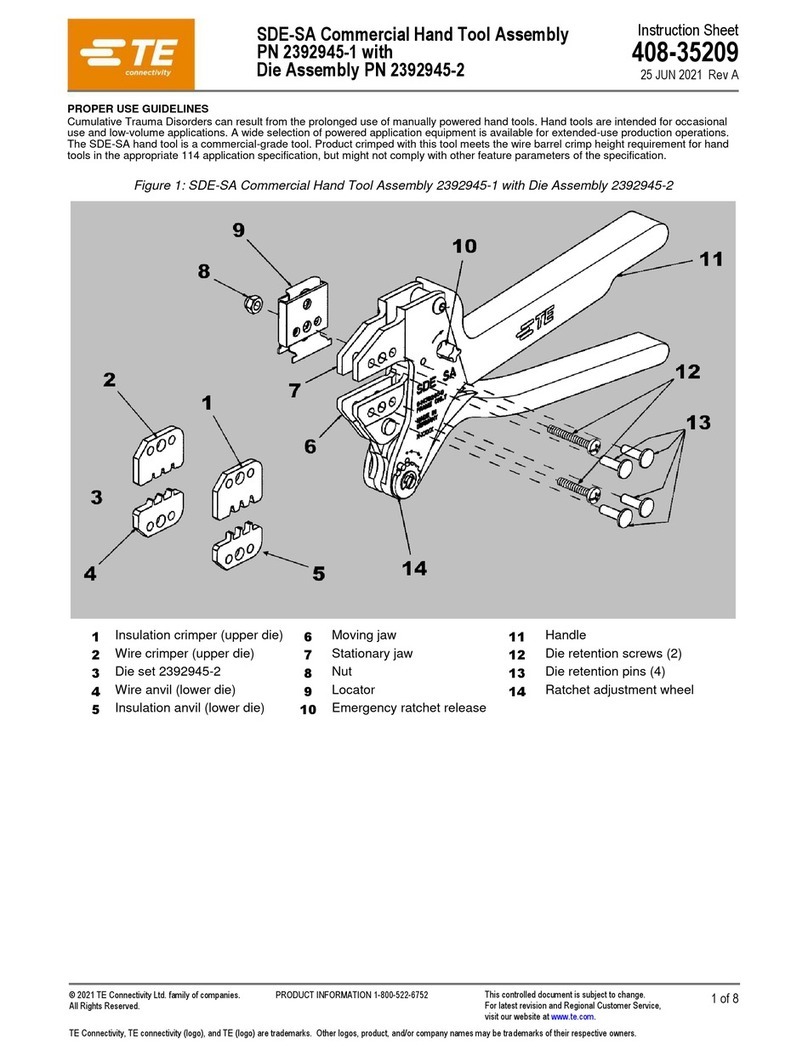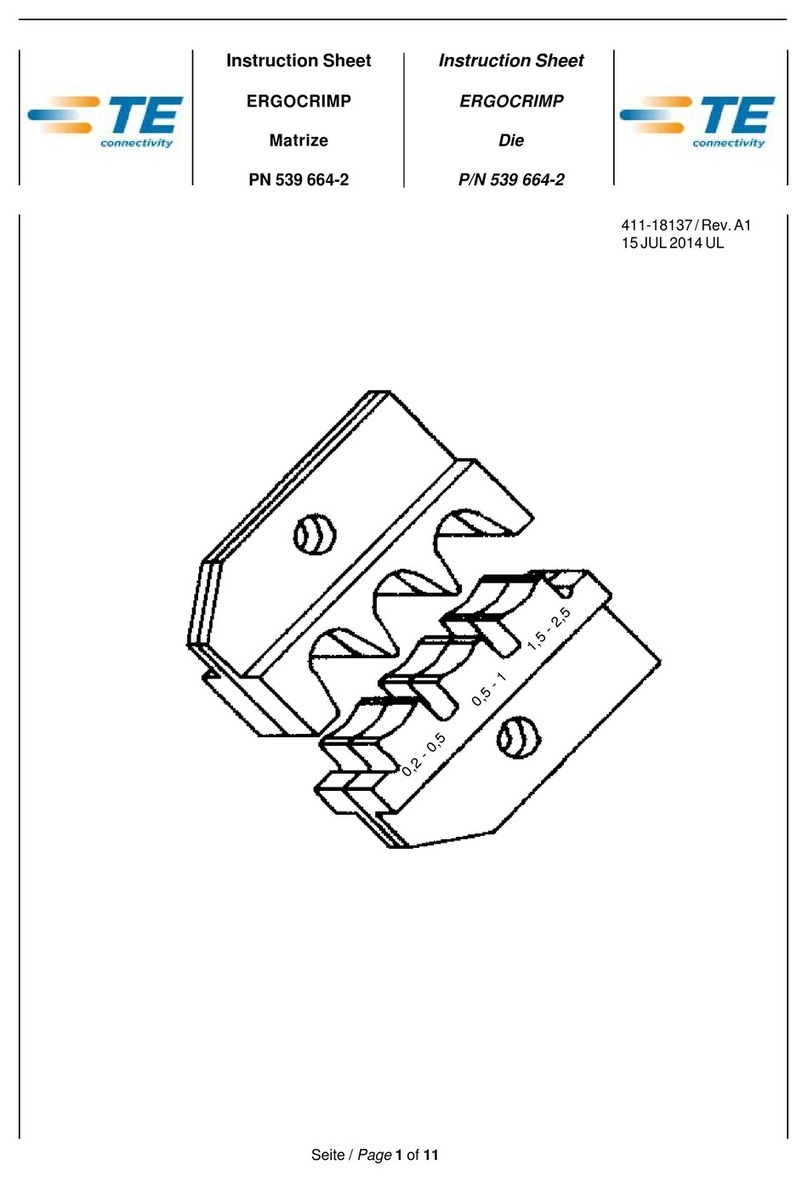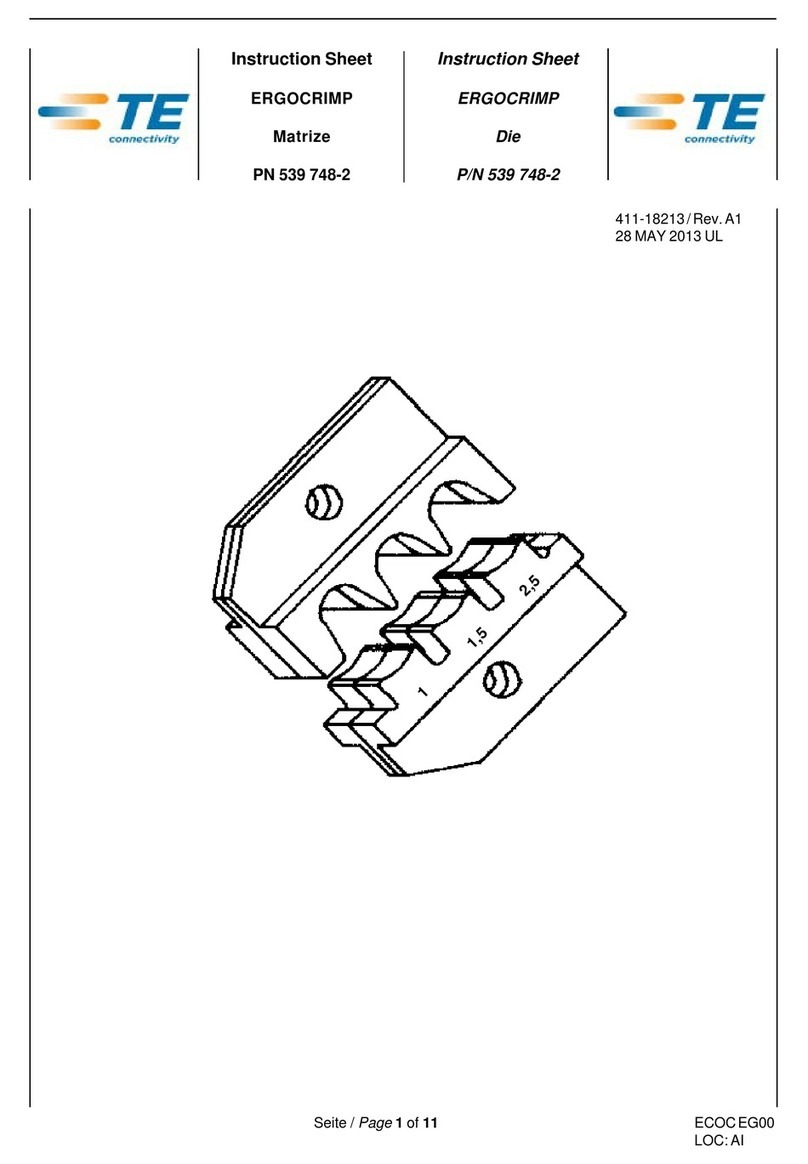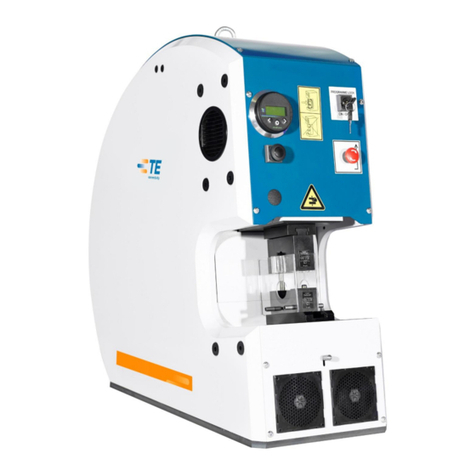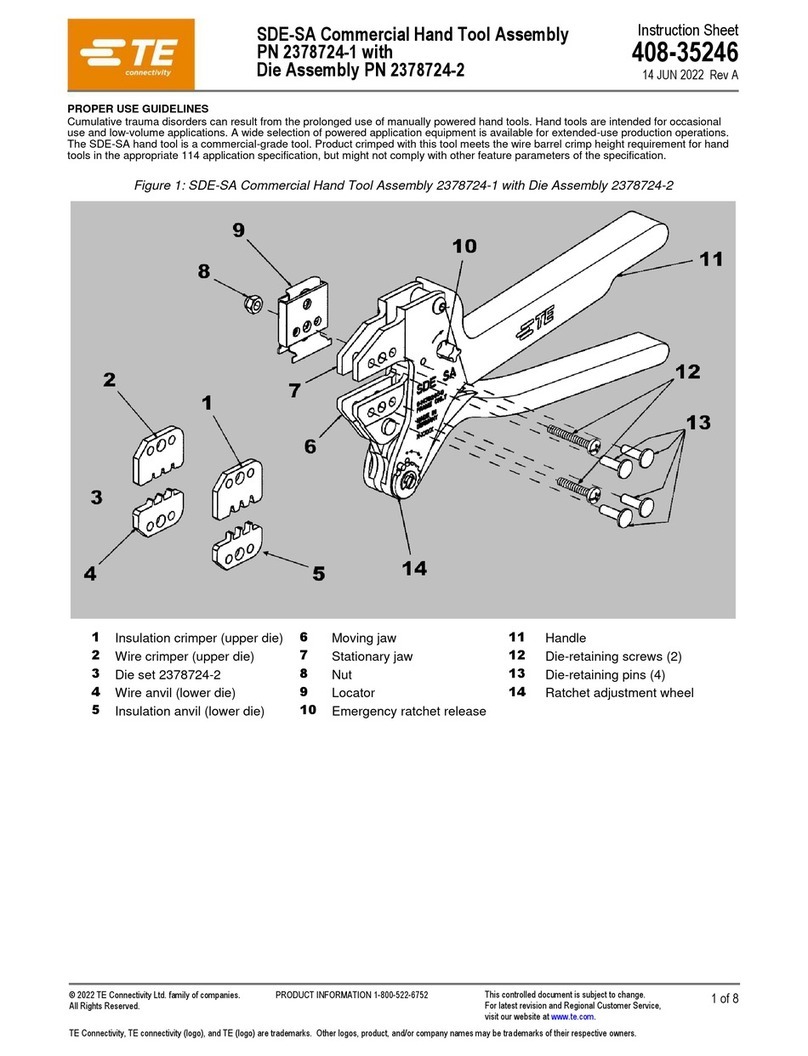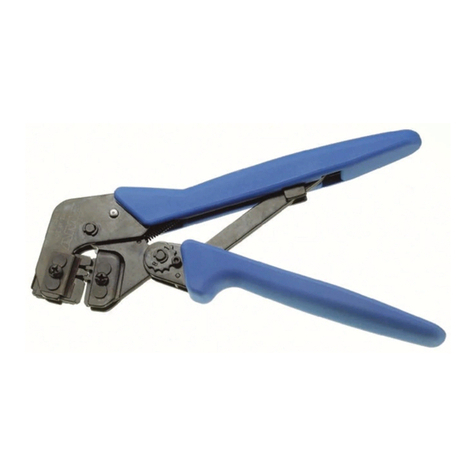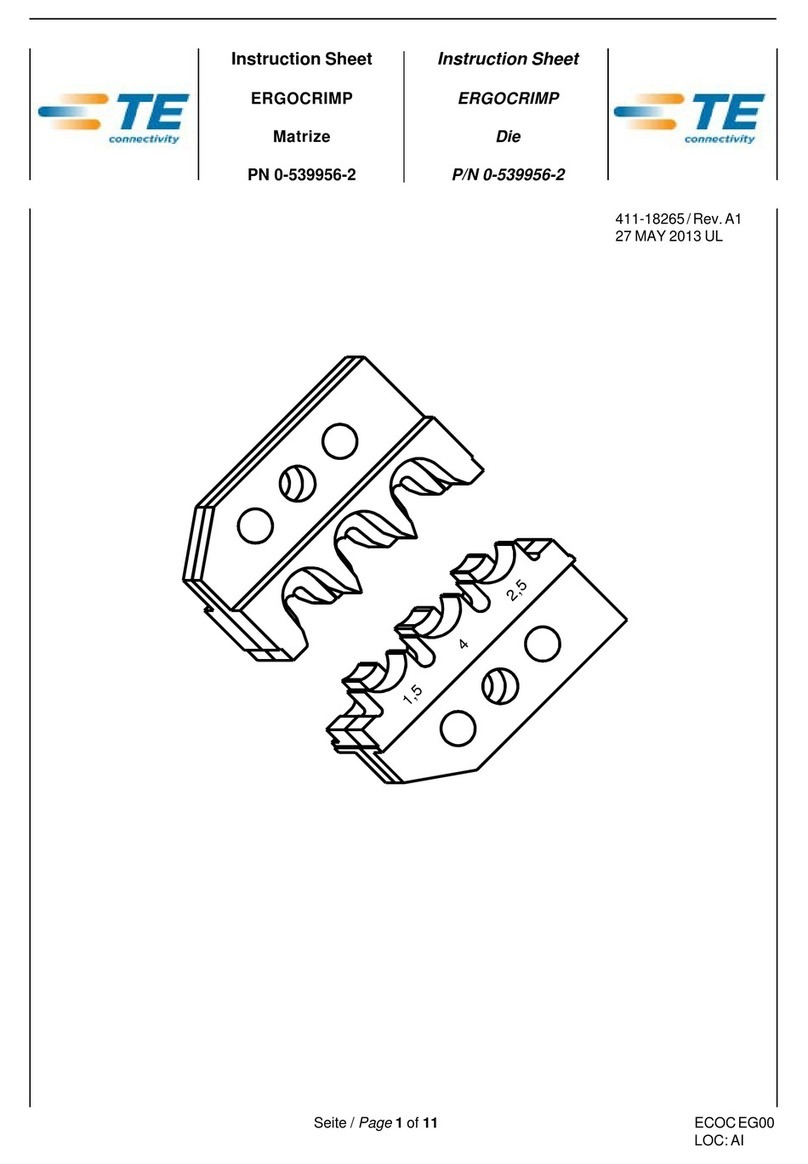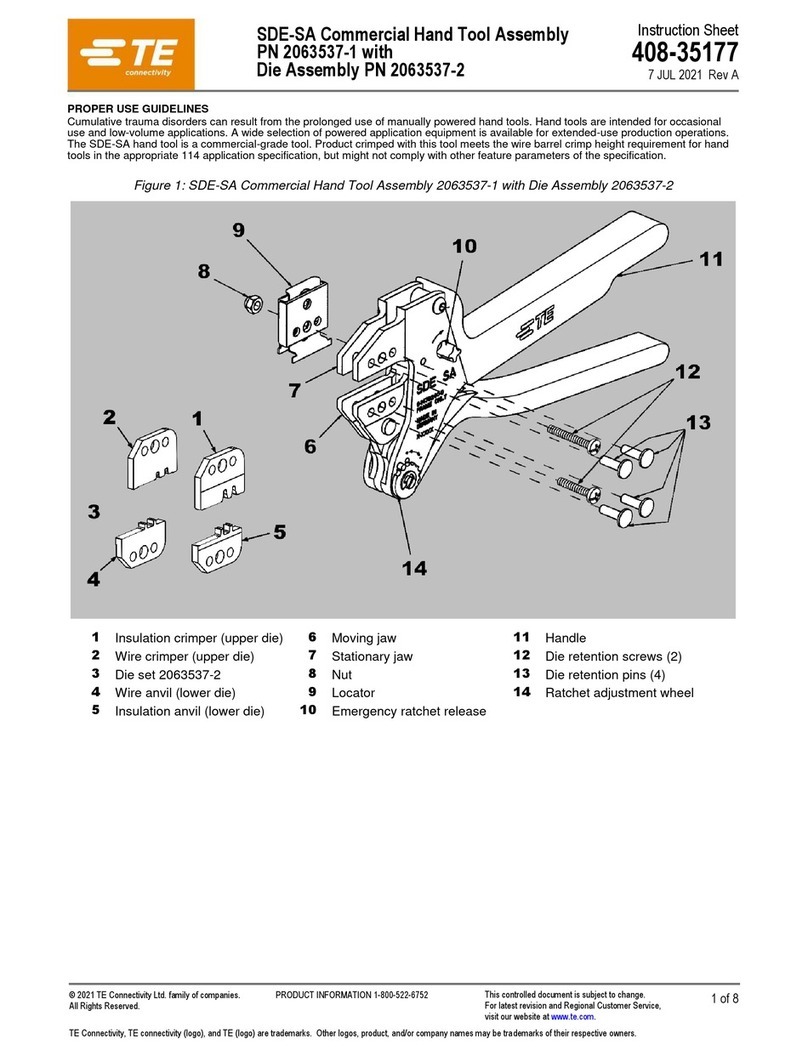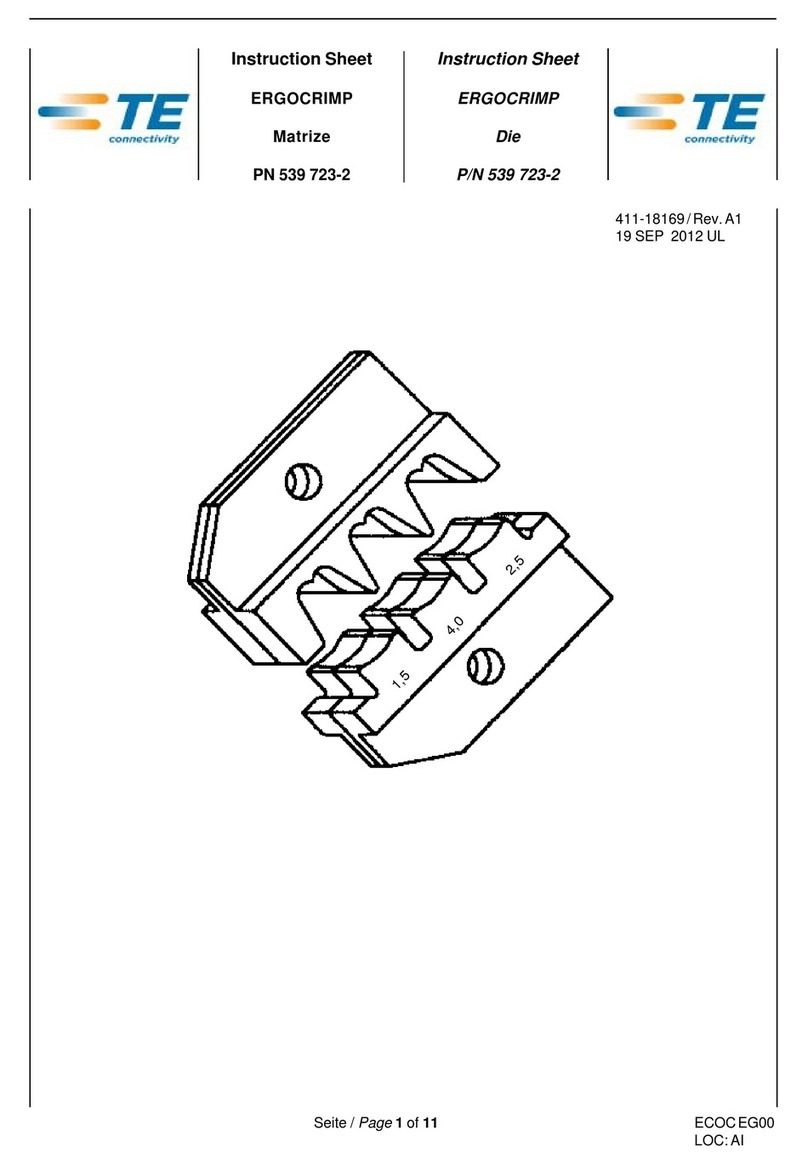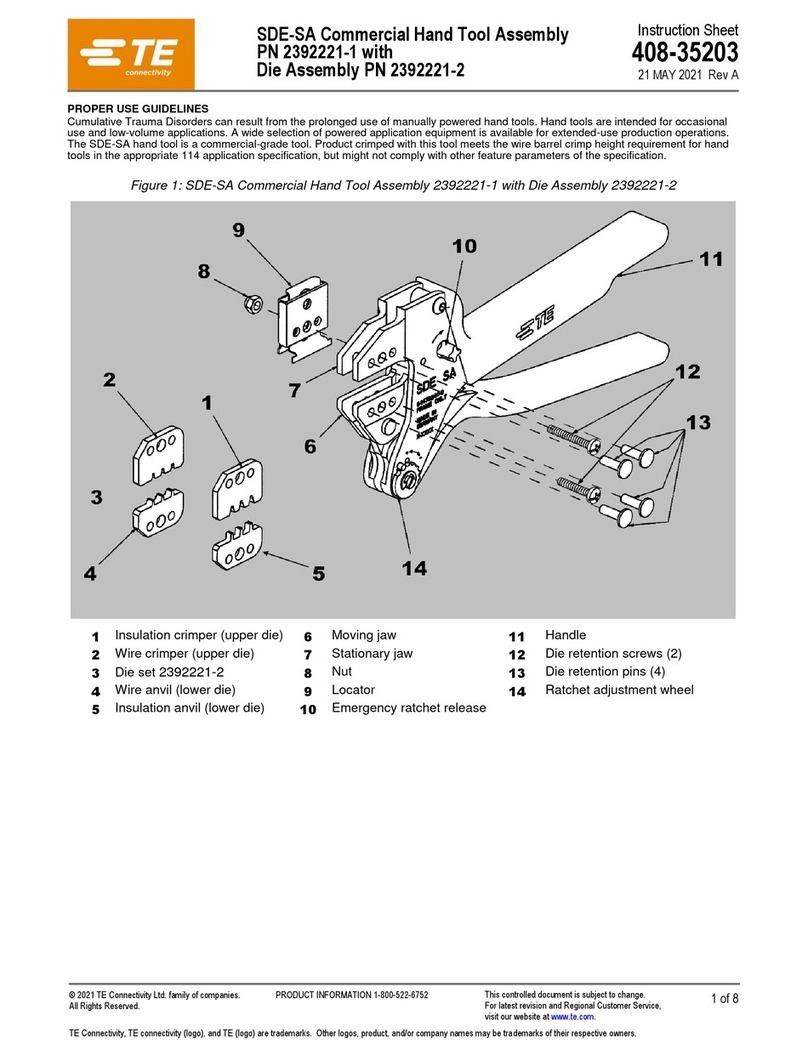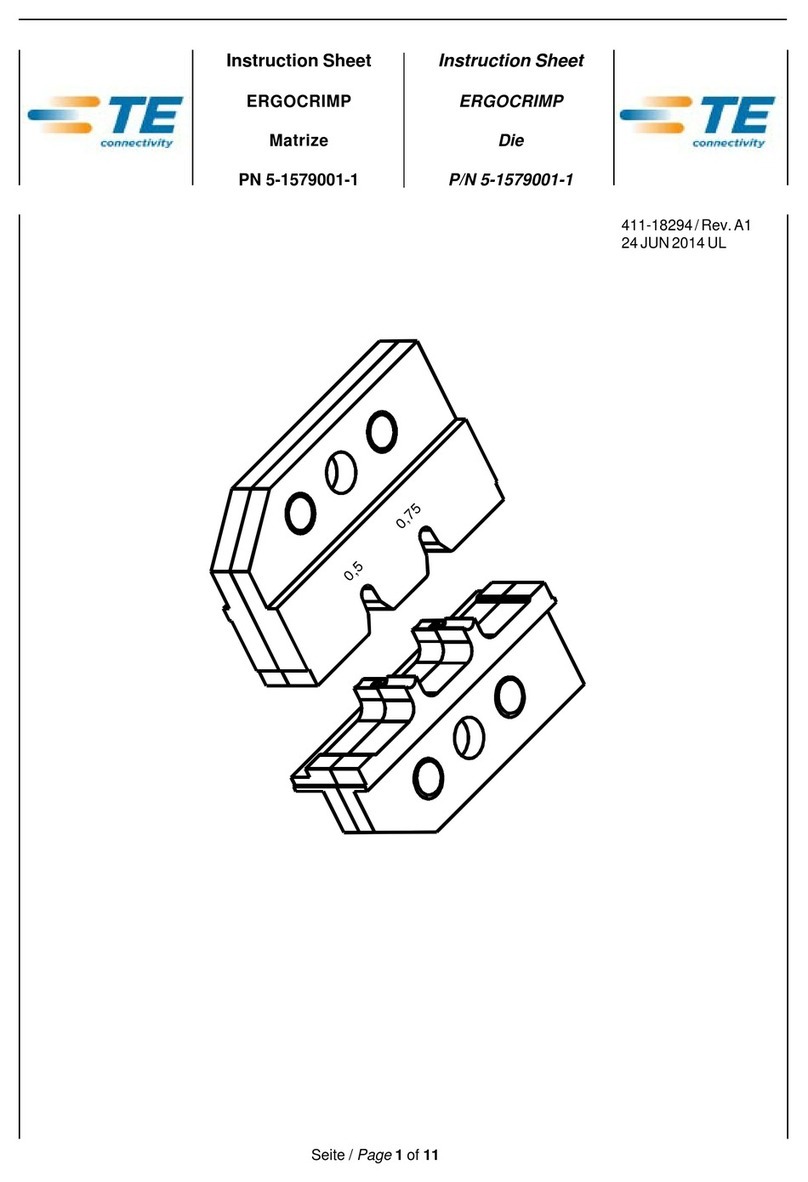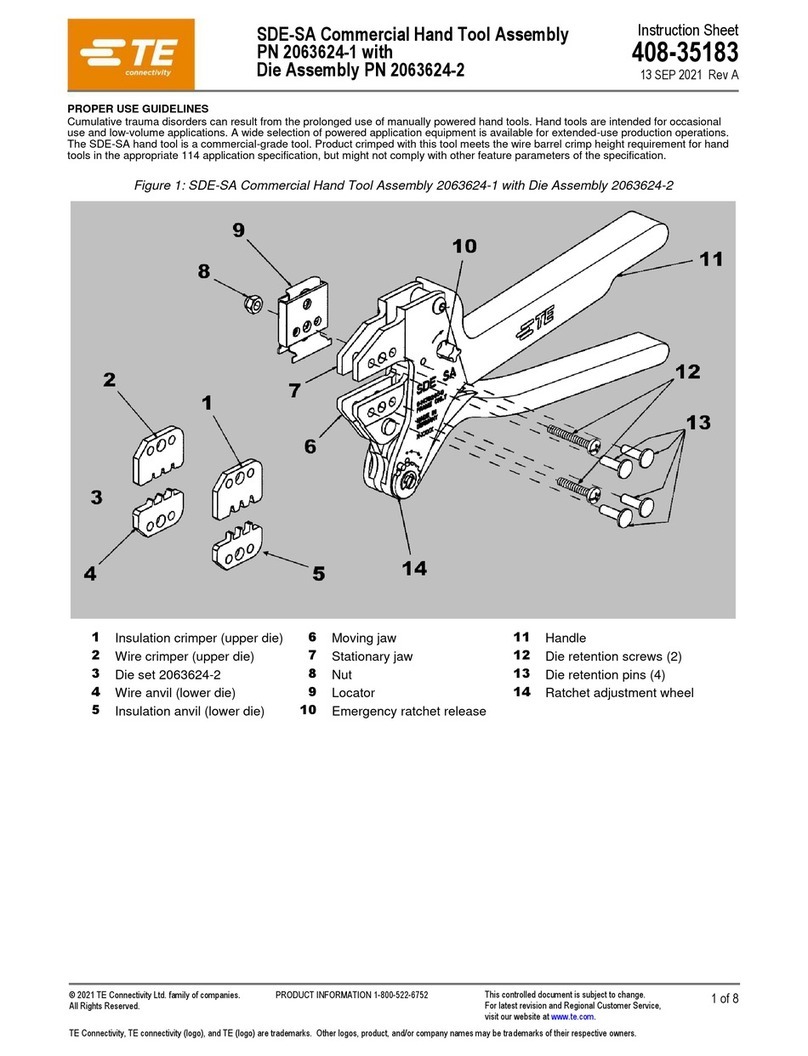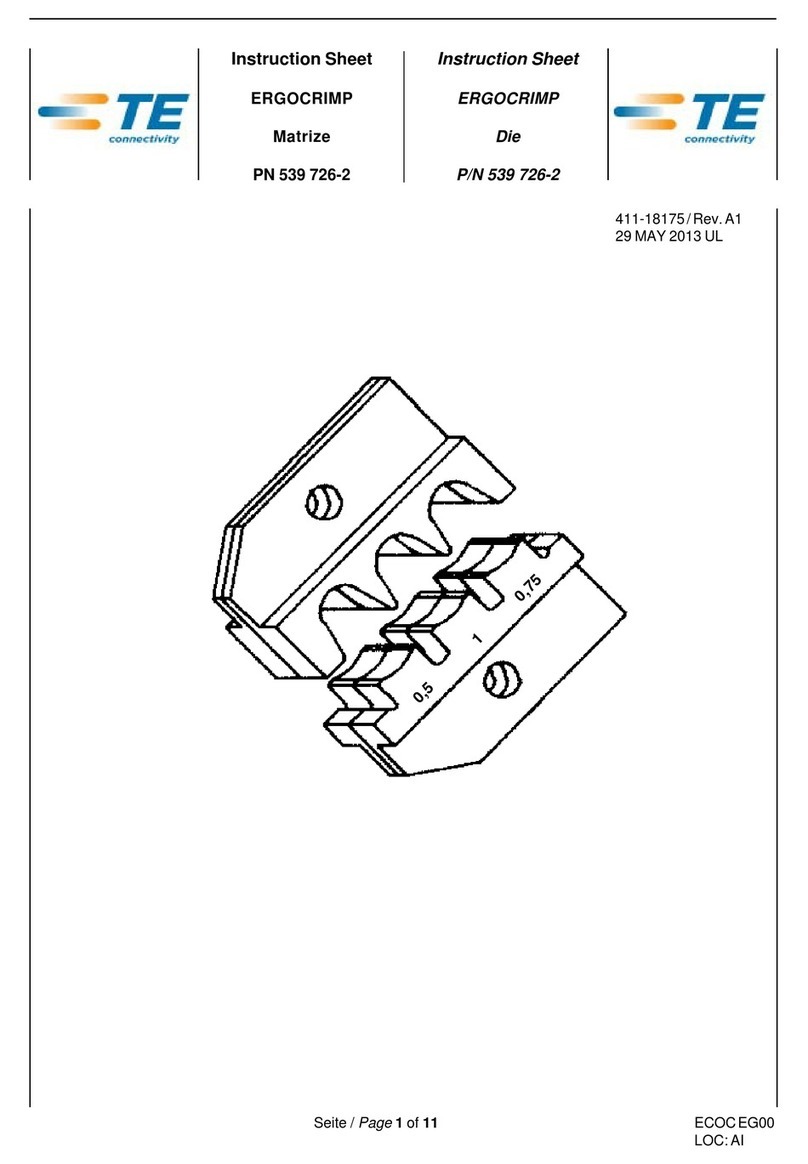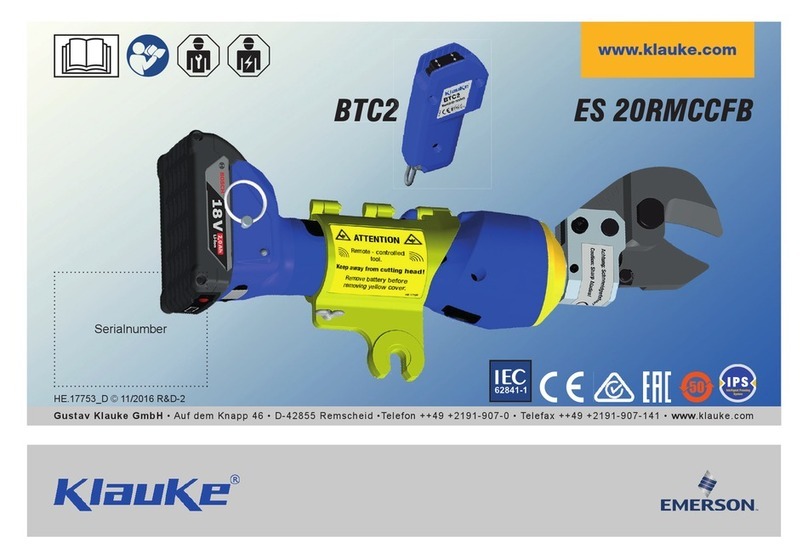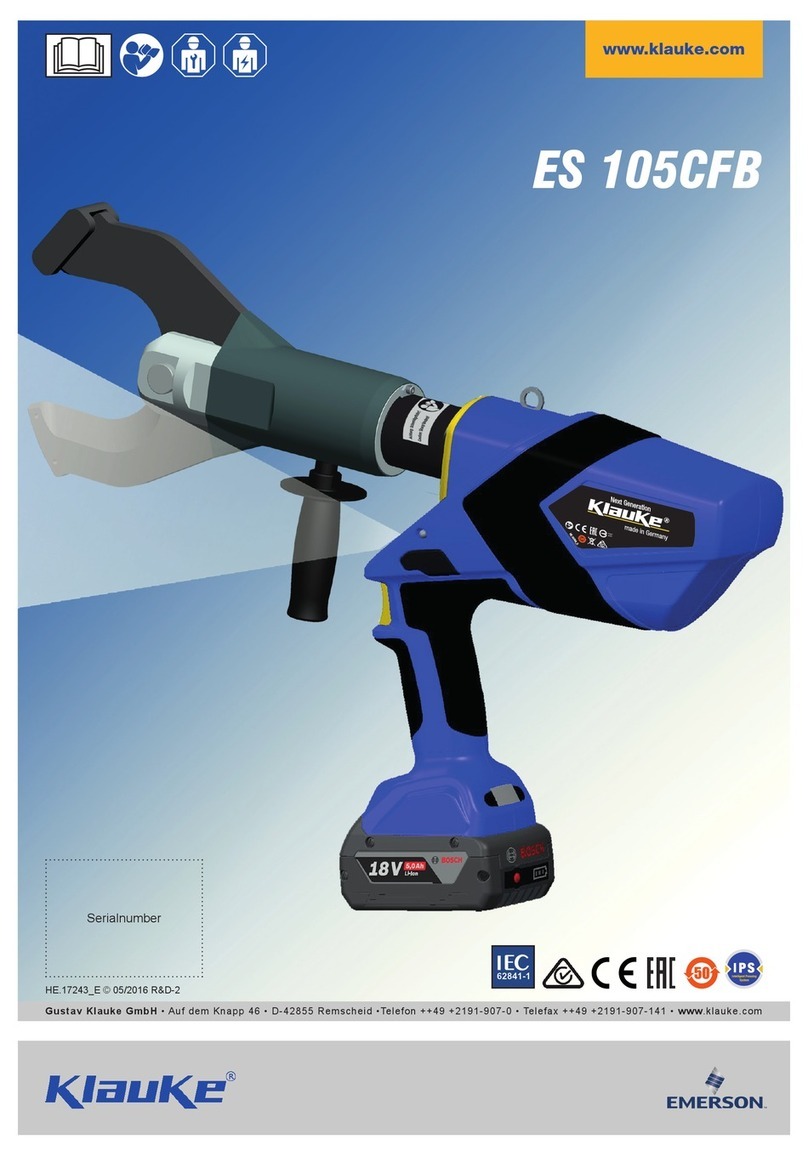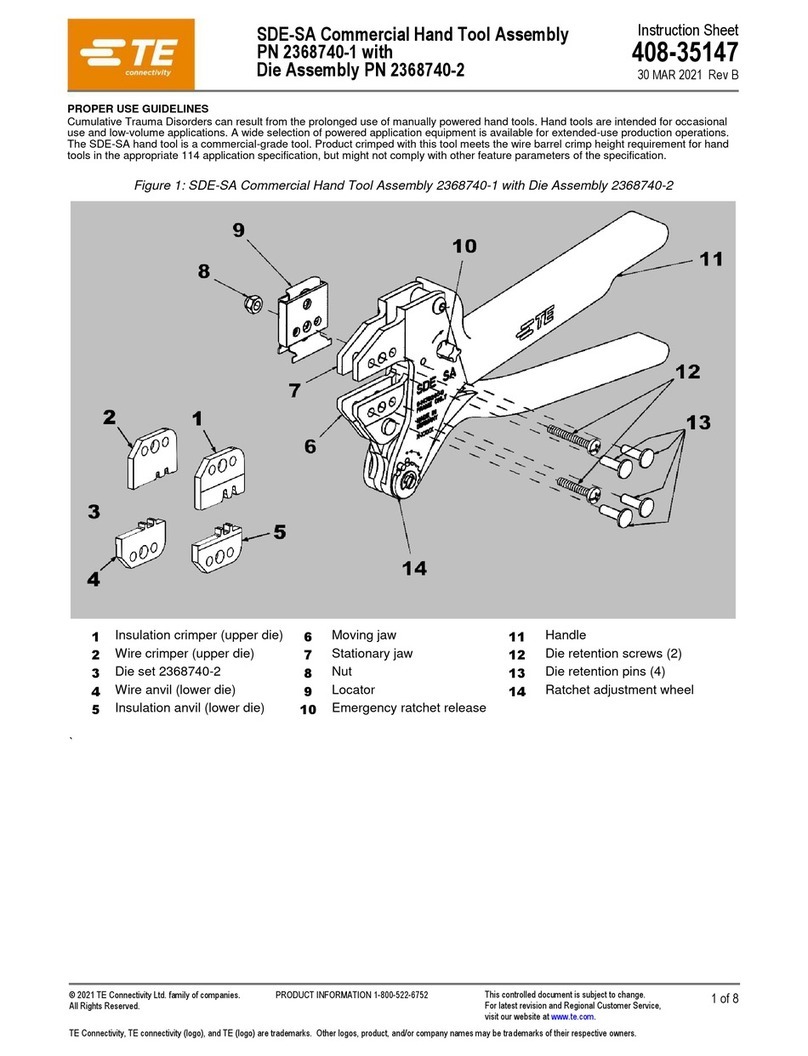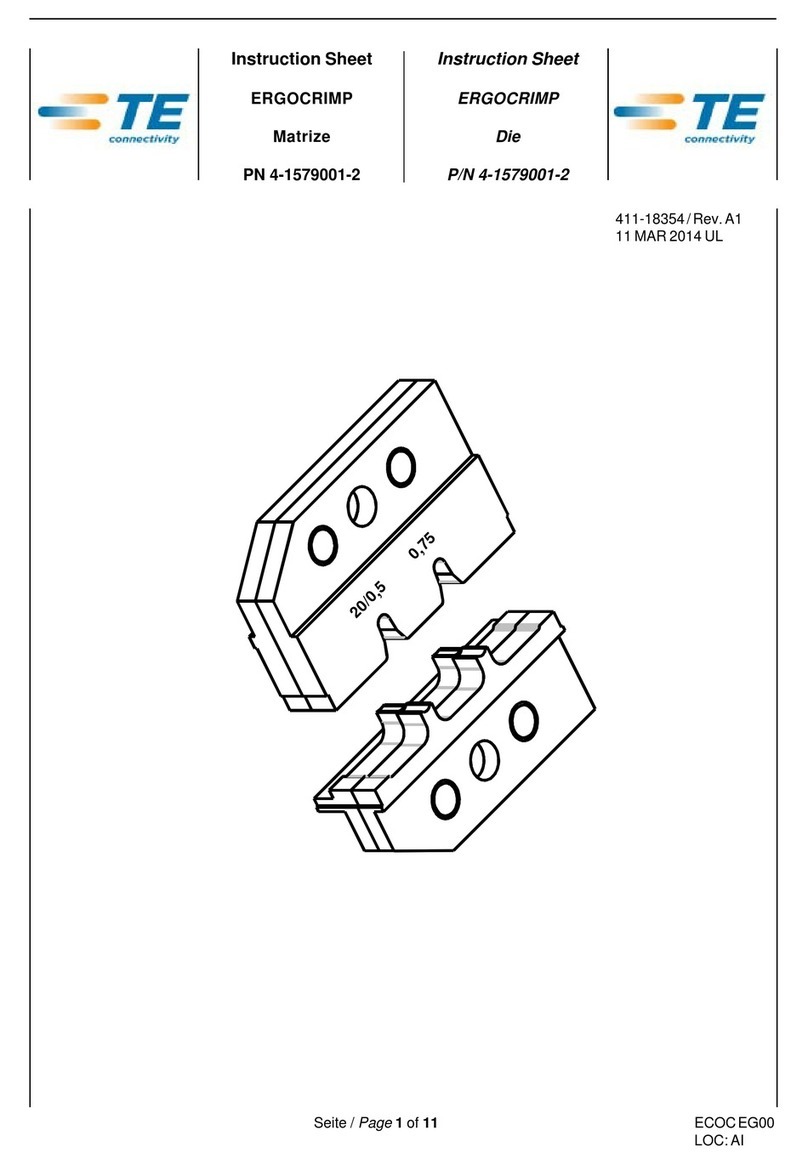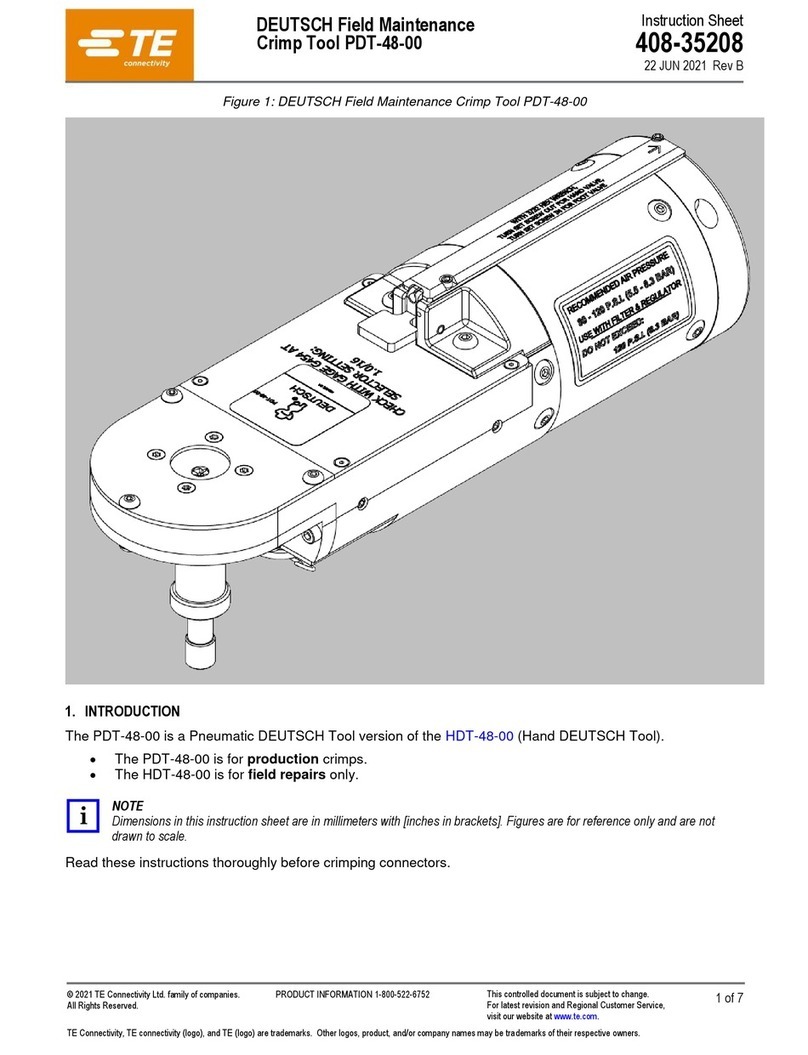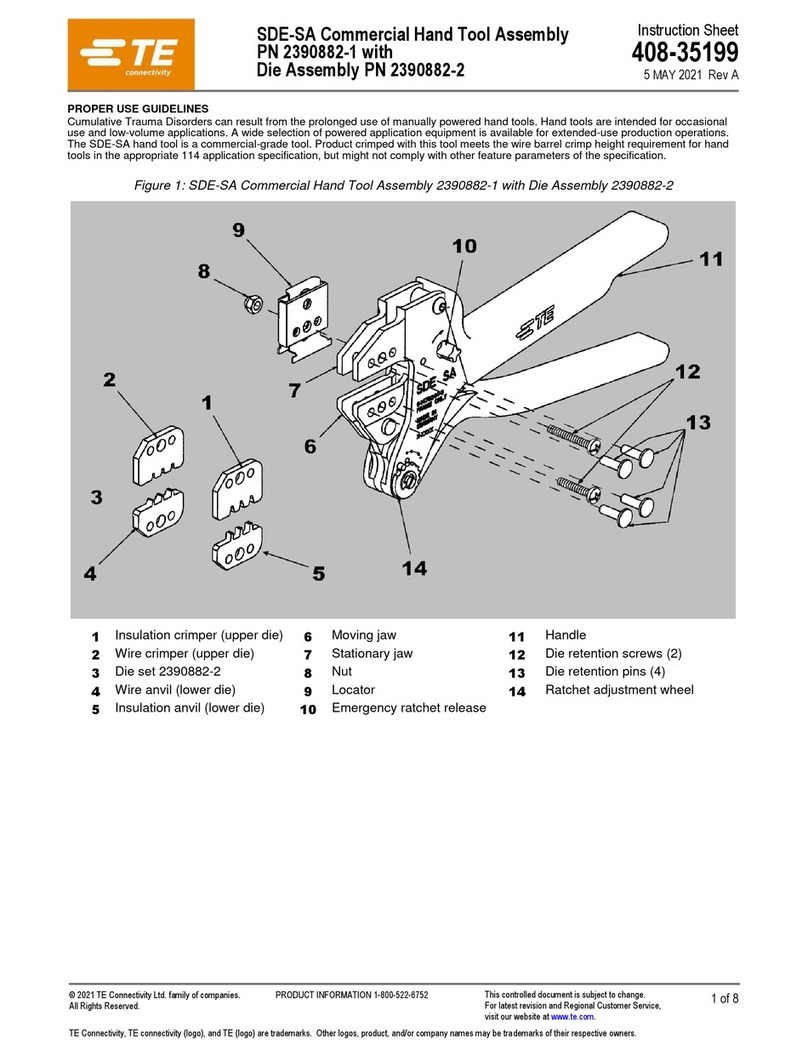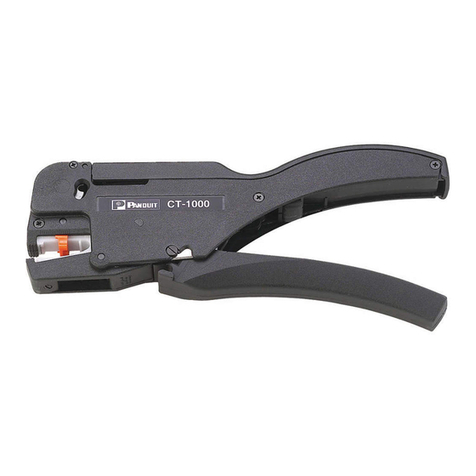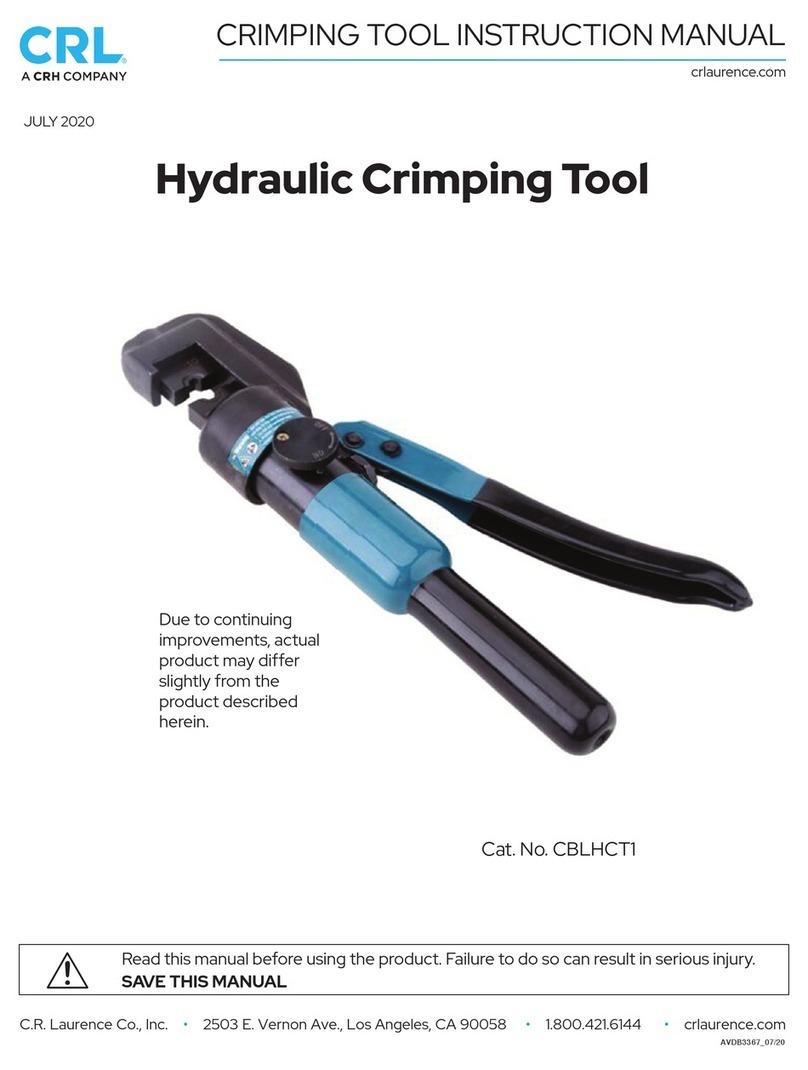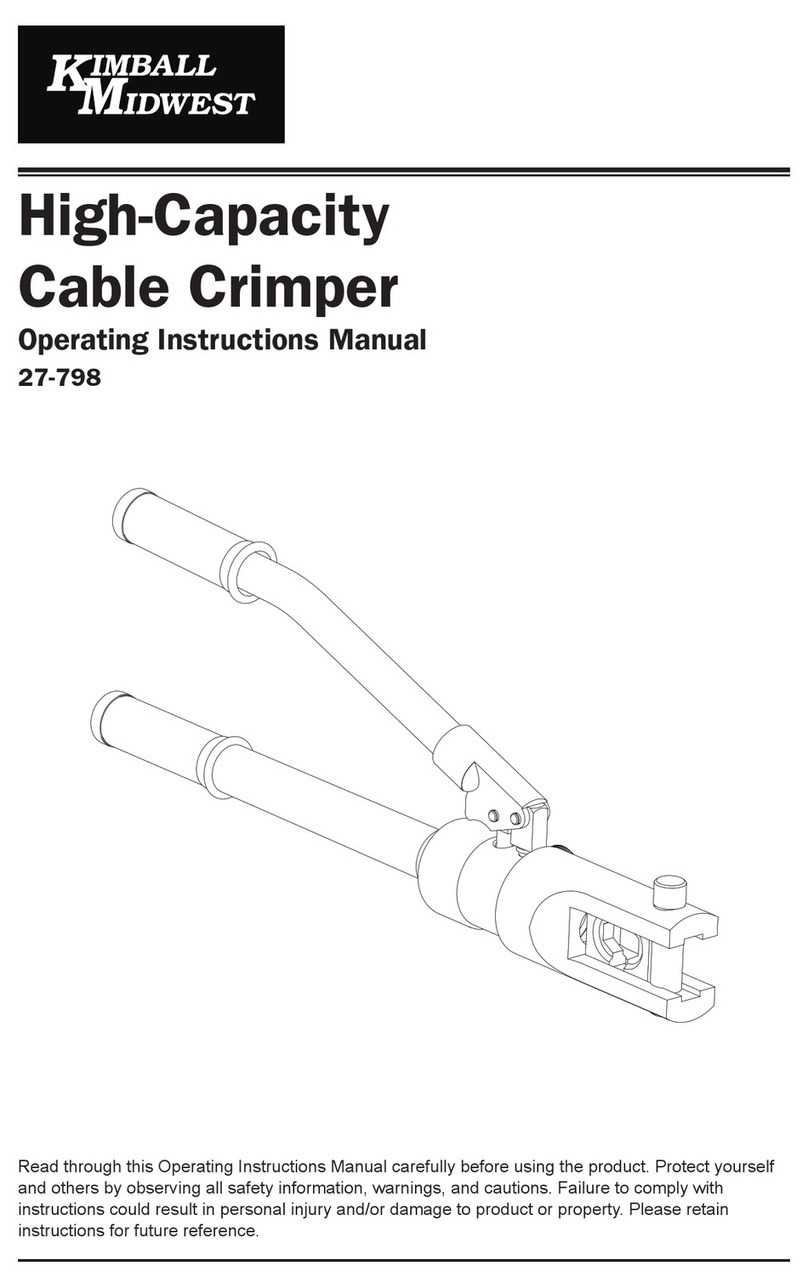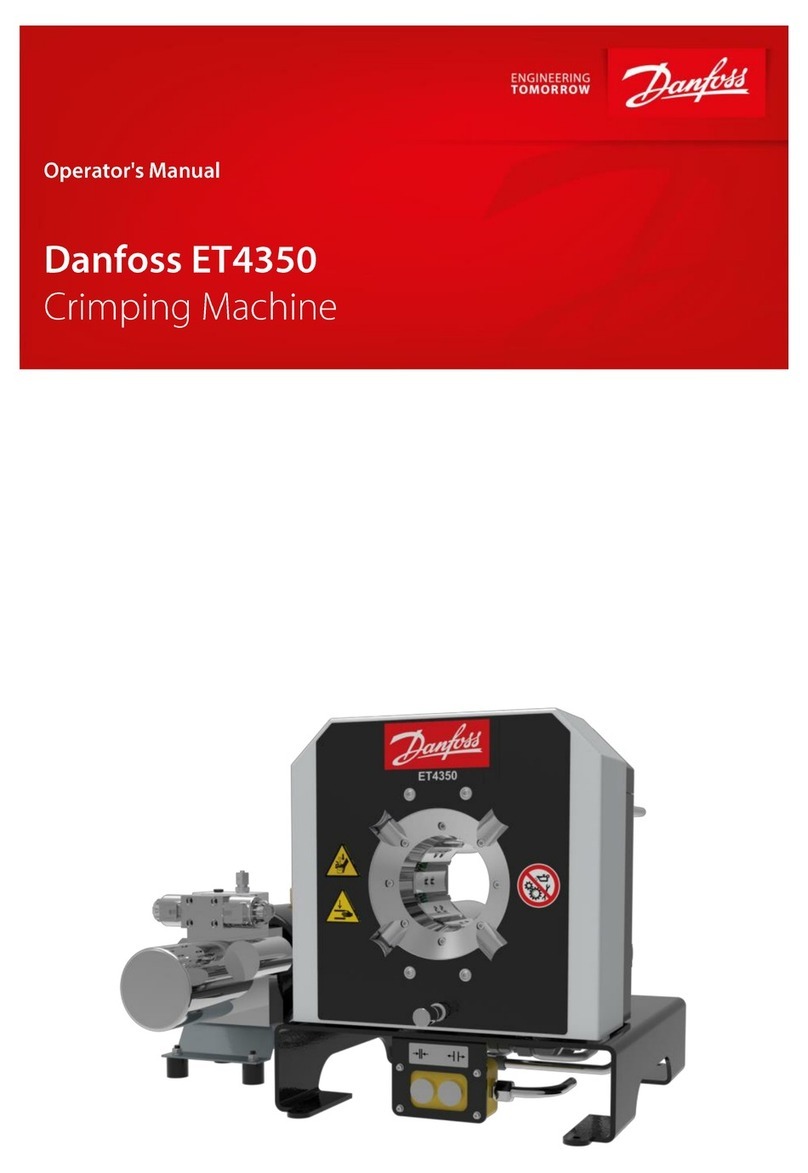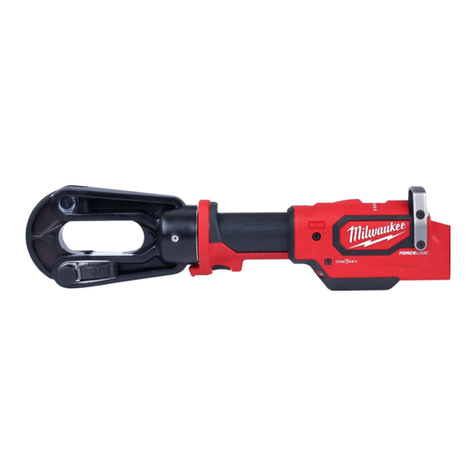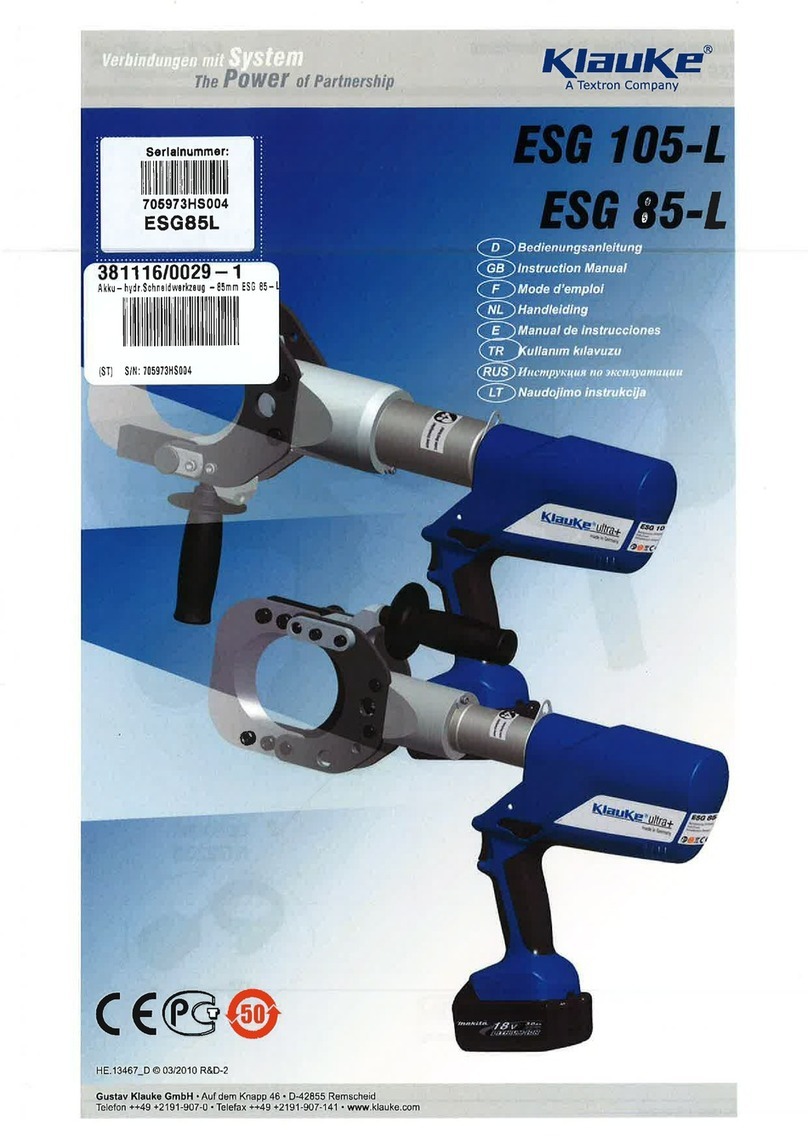
408- 8547
3of 4Rev L
To determine the proper insulation crimp setting, test
crimp a loose piece contact using the setting that
corresponds to the insulation diameter: (1) small,
(2) and (3) medium, or (4) large. If the crimped insulation
barrel is too tight or loose, change the setting by pulling
out and rotating the adjustment knob to the desired
setting.
5. MAINTENANCE AND INSPECTION
It is recommended that a maintenance and inspection
program be performed periodically to ensure dependable
and uniform terminations. Frequency of inspection
depends on:
:The care, amount of use, and handling of the
hand tool,
:The presence of abnormal amounts of dust and
dirt,
:The degree of operator skill, and
:Your own established standards.
The hand tool is inspected before being shipped;
however, it is recommended that the tool be inspected
immediately upon its arrival at your facility to ensure that
the tool has not been damaged during shipment.
5.1. Daily Maintenance
1. Remove dust, moisture, and other contaminants
with a clean brush, or a soft, lint--free cloth. Do NOT
use objects that could damage the tool.
2. Make certain that the retaining pins are in place
and that they are secured with retaining rings. See
Figure 4.
3. All pins, pivot points, and bearing surfaces should
be protected with a thin coat of any good SAE 20 oil.
Do not oil excessively.
4. When the tool is not in use, keep handles closed to
prevent objects from becoming lodged in the crimping
jaws. Store the tool in a clean, dry area.
5.2. Lubrication
Lubricate all pins, pivot points, and bearing surfaces with
SAE 20 oil as follows:
Tools used in daily production — lubricate daily
Tools used daily (occasional) — lubricate weekly
Tools used weekly — lubricate monthly
Wipe excess oil from tool, particularly from crimping
area. Oil transferred from the crimping area onto certain
terminations may affect the electrical characteristics of
an application.
5.3. Periodic Inspection
1. Hand tool may be immersed (handles partially
closed) in a reliable commercial degreasing
compound (suitable for plastics) to remove
accumulated dirt, grease and foreign matter.
2. Close tool handles until ratchet releases and then
allow them to open freely. If they do not open quickly
and fully, the spring is defective and must be
replaced. See the Section 5.
3. Inspect head assembly for worn, cracked, or
broken jaws. If damage is evident, return it for
evaluation and repair.
5.4. Crimp Height Inspection
This inspection requires the use of micrometer with a
modified anvil (commonly referred to as a crimp height
comparator) as shown in Figure 3. TE Connectivity does
not market crimp height comparators. Refer to
Instruction Sheet 408--7424 for detailed information on
obtaining and using a crimp height comparator.
Proceed as follows:
1. Select a contact and a wire (maximum size) for
each crimp section listed in the appropriate table at
http://tooling.te.com/data.asp.
2. Refer to the Section 3, and crimp the contact(s).
3. Using a crimp height comparator, measure wire
barrel crimp height as shown in Figure 3. If the crimp
height conforms to that marked on the tool, the tool is
considered dimensionally correct. If not, return tool to
TE for evaluation and repair (refer to Section 6).
Figure 3
Modified
Anvil
Position Point
On Center of
Wire Barrel
Opposite Seam
Wire Barrel
Crimp Height
5.5. Ratchet Inspection
The ratchet feature on these hand tools should be
checked to ensure that the ratchet does not release
prematurely, allowing the crimping dies to open before
they have fully bottomed. Obtain a 0.025--mm [.001--in.]
shim that is suitable for checking the clearance between
the bottoming surfaces of the crimping dies.
Proceed as follows:
1. Select the maximum size wire and strip it
according to dimensions listed in the drawing shipped
with the tool.
2. Select contact and crimp section corresponding to
the selected wire size (refer to the drawing shipped
with the tool).
3. Position the contact and wire in the crimping dies,
as described in the Section 3, CRIMPING
PROCEDURE.



